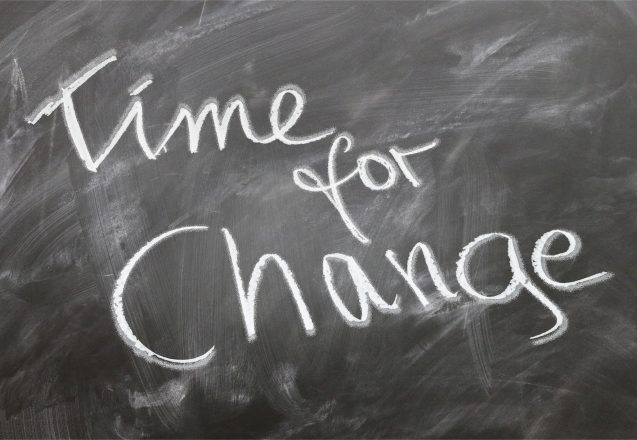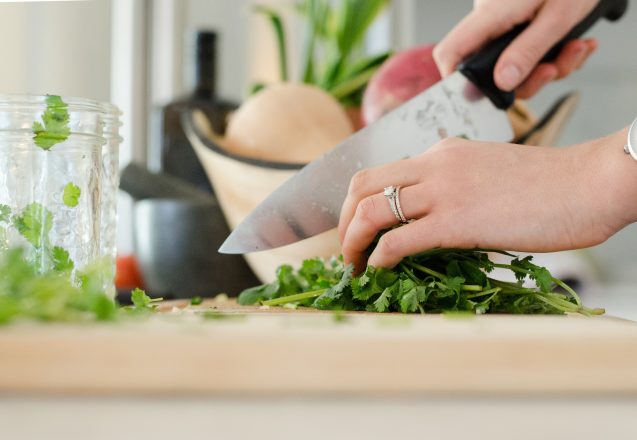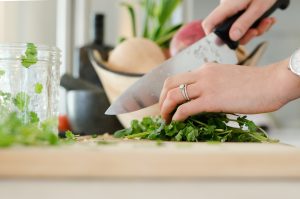Understanding Your BMI
 Exactly what is BMI? BMI represents body mass index. It converts the person’s height and weight to a single number to estimate the amount of body fat and whether the person is healthy or not. While it has its benefits, it’s definitely not the final say on your state of health or whether you need to lose weight. For instance, a muscular person might not need to lose weight, but the BMI would indicate he or she does. It doesn’t take into effect bone density or overall body composition.
Exactly what is BMI? BMI represents body mass index. It converts the person’s height and weight to a single number to estimate the amount of body fat and whether the person is healthy or not. While it has its benefits, it’s definitely not the final say on your state of health or whether you need to lose weight. For instance, a muscular person might not need to lose weight, but the BMI would indicate he or she does. It doesn’t take into effect bone density or overall body composition.
How does BMI work?
A person weighing 150 pounds may be overweight, or they might be the perfect weight or even underweight. It depends on the person’s body frame, whether they’re muscular, and their gender. Yet BMI doesn’t consider these things. It simply is a chart with weight across the top and height down the side. You find your weight and then go down the side to find your height and there’s a number given that ranges from 12 to 50 in the box where they intersect. If that number is below 18.5, you’re underweight. If it’s between 18.5 and 24.9, you’re normal. Between 25 and 29.9 you’re considered overweight and 30 and above you’re obese.
Your bone structure plays a role and that’s just one flaw.
Men have larger bone structure than women, which adds a few pounds more. Men are more muscular and whether you’re a man or woman, the more muscular you are, the more you weigh. Muscle tissue weighs more than fat tissue does, so a cubic inch of muscle will weigh more. The more muscular you are the thinner you’ll look. A person will look thinner if they’re muscular than someone who weighs the same and is the same height who has far less muscle tissue.
BMI isn’t the end all health predictor, just a place to start.
Insurance companies use these charts to identify healthy risks, so do doctors. There have been fit muscular athletes rated and given higher premiums based on BMI until the agent or client sent a photo of them or had a doctor or nurse evaluate their build. It’s just a quick indicator, but not the only indicator. It requires further assessment, such as waist circumference, to identify whether the person is at risk for type 2 diabetes, heart disease, sleep apnea and more issues often faced by people who have a higher BMI.
- Other ways to measure body mass index include MRI scans and underwater weighing. While those are more valid at identifying body density, fat and volume, they’re also more expensive and take longer.
- Waist circumference has become a valid indicator of potential health issues. While a male with a 40-inch waist or a woman with a 34-inch waist may still have a good BMI, their chances of developing diabetes are greater.
- The more muscular you are, the more deceiving your BMI is. That’s also true about people who have very little muscle mass. It’s one of the biggest flaws in using BMI.
- Newer shortcut techniques are being used that indicate your overall health better. RFM— relative fat mass index is one of those. It is a formula using height to waist measurement. For women use 76 – (20 x height/waist circumference) and for men use the formula 64 – (20 x height/waist circumference).
For more information, contact us today at Next Level Fitness



 Most people start a diet when they want to lose weight, but a diet isn’t necessary. All you have to do is start a program of clean eating and at Next Level Fitness in Irvine, CA, we can help you do it. What is clean eating? Clean eating is a way to tailor your diet with whole food, before it became a processed package of chemicals. Many of the foods you find on the shelves of groceries today have had all the nutrients processed out of them and remain nothing more than empty calories filled with preservatives and other chemicals. Clean eating focuses on minimal processing and food that is nutritious.
Most people start a diet when they want to lose weight, but a diet isn’t necessary. All you have to do is start a program of clean eating and at Next Level Fitness in Irvine, CA, we can help you do it. What is clean eating? Clean eating is a way to tailor your diet with whole food, before it became a processed package of chemicals. Many of the foods you find on the shelves of groceries today have had all the nutrients processed out of them and remain nothing more than empty calories filled with preservatives and other chemicals. Clean eating focuses on minimal processing and food that is nutritious.
 Getting fit isn’t all about how long you can run without asking for a break or throwing up at the side of the road. It isn’t all about how much you can lift, either. You need a full body workout that provides flexibility, cardio and strength training. If all you do is run, you’re not doing yourself as much of a favor as you think. While any exercise is better than none, just focusing on endurance leaves you vulnerable to injury. Just pressing weights isn’t the answer either, if it’s all that you do.
Getting fit isn’t all about how long you can run without asking for a break or throwing up at the side of the road. It isn’t all about how much you can lift, either. You need a full body workout that provides flexibility, cardio and strength training. If all you do is run, you’re not doing yourself as much of a favor as you think. While any exercise is better than none, just focusing on endurance leaves you vulnerable to injury. Just pressing weights isn’t the answer either, if it’s all that you do.
 We live in unusual times. Being quarantined might be the opportunity you’ve always wanted. In fact, even if you didn’t want an opportunity to get and stay fit during quarantine, there’s nothing else to do, so why not? Why not experiment with healthy dishes and start on a daily fitness routine. If you want the wild life, why not settle on wildlife viewing instead and go for hikes and walks in the park. Most people say that they’d get fit if they only had the time, now is the time. Even if you’re working from home, your day is cut shorter by lack of commuting and your work clothes are now workout clothes, so there’s no wasted time trying to decide what to wear.
We live in unusual times. Being quarantined might be the opportunity you’ve always wanted. In fact, even if you didn’t want an opportunity to get and stay fit during quarantine, there’s nothing else to do, so why not? Why not experiment with healthy dishes and start on a daily fitness routine. If you want the wild life, why not settle on wildlife viewing instead and go for hikes and walks in the park. Most people say that they’d get fit if they only had the time, now is the time. Even if you’re working from home, your day is cut shorter by lack of commuting and your work clothes are now workout clothes, so there’s no wasted time trying to decide what to wear.
 Is your schedule packed? Do you wish you could get more done in the time you have available? People are always looking for ways to get more done in less time and that holds true in the exercise world, too. I often get asked for ideas for effective workouts with the least amount of time invested. At Next Level Fitness, our program is based on providing the most effective workouts that also save you time. If you’re working out on your own, here are a few ideas.
Is your schedule packed? Do you wish you could get more done in the time you have available? People are always looking for ways to get more done in less time and that holds true in the exercise world, too. I often get asked for ideas for effective workouts with the least amount of time invested. At Next Level Fitness, our program is based on providing the most effective workouts that also save you time. If you’re working out on your own, here are a few ideas.
 The easiest way to fight any disease is to avoid getting it. That means building up the immune system and helping your body to be at its best. At Next Level Fitness in Irvine, CA, we help clients tone their body and eat healthier to improve their potential to stay healthy this summer. Not only can lifestyle changes boost the immune system, it can improve the body’s functioning to prevent serious conditions and lower the risk of injury. Even a health condition already exists, lifestyle changes can help control it better and even improve the quality of life.
The easiest way to fight any disease is to avoid getting it. That means building up the immune system and helping your body to be at its best. At Next Level Fitness in Irvine, CA, we help clients tone their body and eat healthier to improve their potential to stay healthy this summer. Not only can lifestyle changes boost the immune system, it can improve the body’s functioning to prevent serious conditions and lower the risk of injury. Even a health condition already exists, lifestyle changes can help control it better and even improve the quality of life.
 If you want to be successful and finally stick with your exercise regimen, one technique that can help is a regular exercise schedule. How many times have you had a busy day and decided you’d go workout later, only to end the day without ever making it to the gym? That’s what happens when you decide you’ll find the time later, rather than putting it on your schedule and making your workout a specific time. It makes working out a low priority, when it should be at the top of your list.
If you want to be successful and finally stick with your exercise regimen, one technique that can help is a regular exercise schedule. How many times have you had a busy day and decided you’d go workout later, only to end the day without ever making it to the gym? That’s what happens when you decide you’ll find the time later, rather than putting it on your schedule and making your workout a specific time. It makes working out a low priority, when it should be at the top of your list.
 Food journaling is nothing more than writing down information about what you eat and when you eat. It can reveal a lot of information that might otherwise be missed. How often do you mindlessly eat something, barely being aware that you put it in your mouth or felt sick or bloated frequently? Food journaling can not only help you count calories, but also tell you when you eat the most and based on how you do it, the stimulus that made you overeat.
Food journaling is nothing more than writing down information about what you eat and when you eat. It can reveal a lot of information that might otherwise be missed. How often do you mindlessly eat something, barely being aware that you put it in your mouth or felt sick or bloated frequently? Food journaling can not only help you count calories, but also tell you when you eat the most and based on how you do it, the stimulus that made you overeat.
 Do you want to eat healthier, but also want to save money? Consider opting for in-season fruits and vegetables. In fact, you can probably get many of these from local farmers and benefit yourself, but also your local economy. No matter what season you choose, there’s something delicious and healthy being grown in Irvine, CA. Some food, like beets and cabbage, are in season in all months. Beets are especially good for you and some people call them superfood, because of all the nutrients. Both are inexpensive and provide a great start to many tasty dishes.
Do you want to eat healthier, but also want to save money? Consider opting for in-season fruits and vegetables. In fact, you can probably get many of these from local farmers and benefit yourself, but also your local economy. No matter what season you choose, there’s something delicious and healthy being grown in Irvine, CA. Some food, like beets and cabbage, are in season in all months. Beets are especially good for you and some people call them superfood, because of all the nutrients. Both are inexpensive and provide a great start to many tasty dishes.
 Do you grab some carryout at noon or rush to the local food vendor? That can get expensive for both your health and your pocketbook. There’s a lot of reasons to eat healthier, but often people think that’s too expensive. They’re wrong, you can save money by packing a lunch and making that food healthy. When you pack a lunch, you have control over the food you take and the ingredients in it. Whether you’re creating a sack lunch for children or taking your lunch to work, there are healthy options.
Do you grab some carryout at noon or rush to the local food vendor? That can get expensive for both your health and your pocketbook. There’s a lot of reasons to eat healthier, but often people think that’s too expensive. They’re wrong, you can save money by packing a lunch and making that food healthy. When you pack a lunch, you have control over the food you take and the ingredients in it. Whether you’re creating a sack lunch for children or taking your lunch to work, there are healthy options.